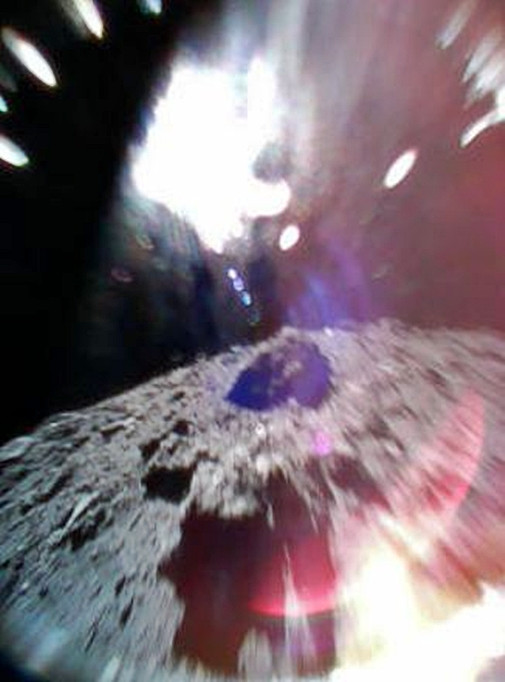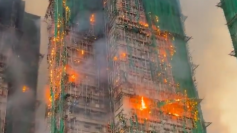Following the successful landing of its two mini-rovers on the asteroid Ryugu on Sept. 22, Japan's Hayabusa2 spacecraft prepares for the next critical parts of its mission -- deploying the heavy Mobile Asteroid Surface Scout (MASCOT) rover to the surface and returning to Earth with asteroid soil samples on December 2020.
Hayabusa2 arrived at Ryugu (280 million kilometers from Earth) on June 27 after its launch on Dec. 3, 2014. It was positioned 20 km from the asteroid's surface to study and map the near-Earth object. In mid-July, the Japan Aerospace Exploration Agency (JAXA), which is in charge of the Ryugu sample return mission, began operations to orbit Hayabusa closer to the asteroid.
On Sept. 21, Hayabusa 2 ejected the first two mini-rovers -- ROVER-1A and ROVER-1B -- 55 meters above the asteroid's surface. Hayabusa2 waited for a minute and then ascended to its orbital altitude 20 kilometers above the surface. JAXA said the release of the mini-rovers went successfully.
Both small cylindrical-shaped rovers, which weigh about one kilogram each, fell independently to the surface and began "hopping" as they explored the asteroid. JAXA said both the two Minerva-II-1 rovers are functioning nominally and transmitting data and images. The two mini-rovers broadcast their first images of the surface of Ryugu back to JAXA on Sept. 22, or a day after they touched down.
The next key landmark for the mission is deploying a third rover -- the German-French Mobile Asteroid Surface Scout (MASCOT) -- on Oct 3. Weighing 9.6 kg, MASCOT carries a camera, an infrared spectrometer, a magnetometer and a radiometer. The camera will be used to image small-scale structures, and the distribution and texture of the regolith.
This rover measures 29.5 cm × 27.5 cm × 19.5 cm and will investigate the surface structure; the mineralogical composition; the thermal behavior and magnetic properties of the asteroid. MASCOT is capable of tumbling to reposition itself for further measurements.
Hayabusa2 will then execute the most important part of the mission - capturing soil samples from Ryugu and returning these to Earth. It will attempt three brief touch-and-go landings on the asteroid to collect samples. Scientists hope the Ryugu soil samples will yield clues about the origin of the solar system and life on Earth.
In late October, Hayabusa2 will collect three samples and store them in separate sealed containers inside the sample return capsule. The three desired samples are surface regolith, hydrated material, and excavated sub-surface material.
To obtain soil samples, Hayabusa2 will approach Ryugu with its sampling horn extended. When the horn touches the surface, a projectile (a 5 gram tantalum bullet) will be fired into the surface. The resulting ejecta particles will then be collected by a catcher at the top of the horn.
Additional samples will be taken from material deeper into the subsurface that's not been subjected to space weathering. To get to this deeper soil, Hayabusa 2 will deploy the Small Carry-on Impactor (SCI). This device is a kinetic impactor consisting of a 2.5 kg copper projectile ejected by an explosive propellant charge.
Hayabusa2 will return to Earth at the end of the mission's science phase in December 2019. In December 2020, the spacecraft's re-entry capsule with the three containers with soil samples will be released to re-enter Earth's when Hayabusa 2 flies past the Earth.






